ANPA vs AUG
In previous articles, we considered the possibilities of detecting aircraft carrier strike groups (AUG) space reconnaissance, stratospheric electric UAVs, high-altitude and medium-altitude UAVs of HALE and MALE class... Immediately before striking the AUG can be arranged "Driven hunting" with the help of a flock of small-sized UAVs based on cruise missiles и destruction of AWACS aircraft in the direction of attack.
Consider another promising area - autonomous unmanned underwater vehicles (AUV).
Let's talk about a few points right away.
Often in the comments to articles something like this is sounded:
"We will never have that."
Etc. etc.
We don't have a lot of things. For example, we actually do not have aircraft carriers (do not count the unfortunate Kuznetsov as such), but talks about its creation have been circulating for more than a decade. We do not have high-altitude UAVs, but a year ago there were no medium-altitude ones, and this year they have already gone to the troops. There are no reusable launch vehicles and the production of satellites in the hundreds and thousands a year, but a couple of years ago no one had this. And we have no fundamental obstacles to master these technologies (but there are many reasons not to master).
In our time, civil and military technologies are rapidly developing, as a result of which (still impossible a decade ago) systems and complexes appear. And we are not talking about mythical "antigravity", but about completely terrestrial technologies, such as laser weapons, which, although it began to be created a long time ago, has only now matured to practical use. Therefore, we will try to take into account the technical forecasts of today and tomorrow. Well, to believe in them or not is a private matter for everyone.
Where to get the money for all this? Everything may not work, but there is more than enough money in the country. The question should be raised rather about their intended / inappropriate use.
Underwater gliders
Previously, we looked at high-altitude electric UAVs, potentially capable of being in the air for months or even years. There is something conceptually similar for fleet.
We are talking about the so-called underwater gliders, which use the effect of underwater gliding by changing the buoyancy and trim. Also, their underwater part can be connected with a cable to the surface, carrying a solar battery and communication antennas.
An example is the Wave Glider apparatus, which has a two-section structure. The hull with the steering gear, lithium-ion batteries and solar panels is connected to the underwater part-frame by a cable 8 meters long. The wings of the frame oscillate and give the Wave Glider a speed of about two kilometers per hour.
Wave Glider has good resistance to storm conditions. The autonomy of the device is 1 year without maintenance. The Wave Glider platform is open source. And various equipment can be integrated into it. The cost of one Wave Glider is about $ 220.
Wave Glider is built using civilian technology. And it is used for civilian purposes - to measure seismic activity, magnetic field, water quality in deep-water drilling areas, search for oil leaks, study salinity, water temperature, ocean currents and many other tasks.
For military purposes, Wave Glider devices are being tested for solving problems of finding submarines, protecting ports, reconnaissance and surveillance, picking up weather data and relaying communications.
In Russia, the development of underwater gliders is carried out by JSC NPP PT Okeanos. The first practical example, the MAKO glider, with a working immersion depth of up to 100 meters, was developed and tested in 2012.
Experts assume the possibility of deploying hundreds and even thousands of underwater gliders in the future, operating within a single distributed network-centric structure. The autonomy of underwater gliders can be up to five years.
Their advantages (in addition to high autonomy) include low cost of creation and operation, low level of their own physical fields, ease of deployment.
If we take as a basis the cost of the Wave Glider apparatus of 220 thousand US dollars, then 200 units worth 44 million US dollars can be produced per year. In 5 years there will be 1000 of them. And in the future, this amount can be maintained at a constant level.
Is it a lot or a little? The area of the world's oceans is 361 square kilometers. Thus, when 260 underwater gliders are launched, there will be 000 square kilometers per 1000 glider (this is a square with a side of 1 km).
In fact, the water surface area of interest to us will be much smaller, and we will also remove the border waters, the surface covered with ice. And ultimately one underwater glider will fall on a square with a side of the order of 100-200 kilometers.
What can these gliders do? First of all, to solve the tasks of electronic intelligence (RTR) - to detect the radiation of radar stations (radar) of early warning aircraft (AWACS) and radar of anti-submarine detection aircraft (PLO), radio exchange via Link-16 communication channels. It can also detect signals from hydroacoustic buoys operating in an active mode, underwater acoustic communication facilities, and the operation of hydroacoustic stations (GAS) in an active mode.
In Russia, non-acoustic methods are being developed for detecting low-noise targets by wake, thermal and radioactive traces, as well as by trace fields from the movement of propellers under water. It is possible that some of them can be implemented as part of underwater glider equipment.
The aggregate information received via satellite data transmission channels from the entire network of underwater gliders will make it possible with a high probability to detect surface ships, AWACS and PLO aircraft, enemy submarines.
Can a single ship "slip through" hundreds of underwater gliders? Probably yes. Will AUG be able to do this? Unlikely. And the more ships and aircraft in the AUG, the more likely it will be possible to reveal its location.
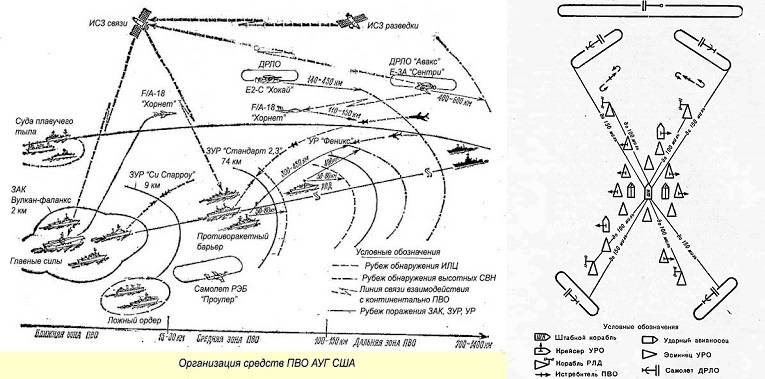
AUG ships and aircraft operate on a vast territory, tens of thousands of square kilometers.
Can the enemy detect underwater gliders? Maybe, but not all. And he will never be sure he found them all. The glider itself has minimal visibility, and data transmission to the satellite can be carried out in short bursts.
In addition, as in the case of stratospheric electric UAVs, there is a high probability that there will be many not only military, but also civilian gliders. Detecting and destroying them all will require significant activity from the enemy, which will unmask him in front of other reconnaissance means.
The gliders' tasks will not be exhausted by reconnaissance alone. They can be used to give false signals in the radar and acoustic ranges to deliberately attract the enemy's attention and divert his resources from looking for other threats.
The possibility of using gliders as a kind of mobile minefields cannot be ruled out. However, these will already be much larger, more complex and expensive products.
Autonomous unmanned underwater vehicles
In principle, the underwater gliders discussed in the previous section also refer to light AUVs, but within the framework of this article we will use this abbreviation in relation to unmanned underwater vehicles of a larger dimension.
The Rubin Central Design Bureau of Marine Engineering has carried out R&D work on the Surrogate robotic underwater vehicle.
The length of the hull of the AUV "Surrogate" is 17 meters, the estimated displacement is 40 tons. Diving depth up to 600 meters, maximum speed 24 knots, cruising range over 600 nautical miles. The main task of the AUV "Surrogate" is to simulate the magnetoacoustic characteristics of various submarines.
AUVs of the "Surrogate" type can be used to divert enemy anti-submarine forces, to cover the deployment of strategic missile submarine cruisers (SSBNs). Potentially, their dimensions allow them to be placed on the outer hull of multipurpose nuclear submarines (MCSNS) and SSBNs.
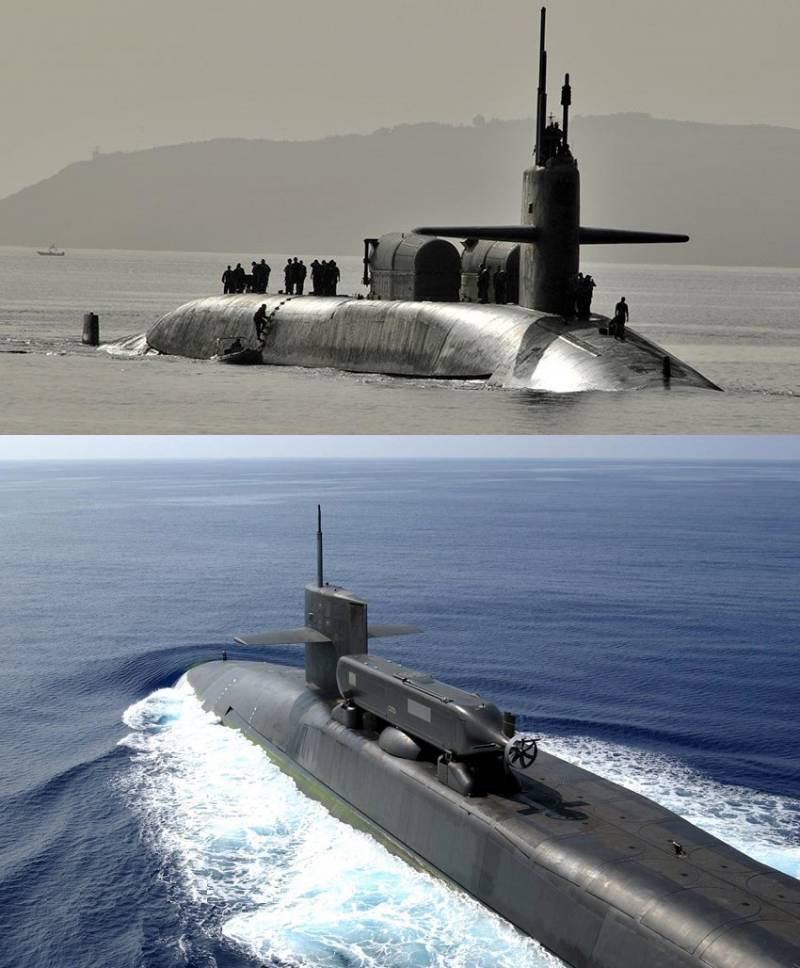
Submarine nuclear missile and ballistic boat (SSBN) "Ohio" with small-sized submarines attached to the hull for transporting saboteurs. Likewise, several AUVs "Surrogate" can be fixed on the hull of the MCSAP / SSBN.
Using the AUV "Surrogate", SSNS and SSBNs can both increase their survivability and implement new tactical schemes to counter enemy NK and submarines.
AUV "Surrogate" devices can be considered the "first sign" among such weapons. In the future, their design will become more complicated, and the list of tasks to be solved will expand - this is reconnaissance, and relaying communications, and the use of AUVs as a remote weapon platform, and not only for torpedo weapons or anti-ship missiles (ASM), but also for such submarine-specific weapons, such as anti-aircraft missile systems (SAM).
Placing air defense systems on manned and uninhabited submarines can significantly change the format of war at sea, largely leveling the capabilities of PLO and AWACS aircraft covering the AUG.
In Russia there is a significant groundwork for the creation of an AUV. An example is the deep-water AUV SGP Vityaz-D developed by the Rubin Central Design Bureau MT.
AUV SGP "Vityaz-D" is designed for survey and search and bathymetric surveys, sampling of the upper soil layer, sonar survey of the bottom topography, measurement of hydrophysical parameters of the marine environment. The device has zero buoyancy, titanium alloys and high-strength spheroplastics are used in the design. It is driven by four cruising motors and ten thrusters. The payload includes echo sounders, sonars, hydroacoustic navigation and communication facilities, video cameras and other research equipment. The range is 150 km, the autonomy of the device is about a day.
AUVs of the "Harpsichord" series have also been developed, which exist in two modifications - "Harpsichord-1R", developed by the Institute of Marine Technologies Problems of the Far Eastern Branch of the Russian Academy of Sciences (IMPT FEB RAS) and "Harpsichord-2R-PM", developed by the Central Design Bureau MT "Rubin" (most likely, the research was carried out by these organizations jointly).
The weight of the AUV "Harpsichord-1R" is 2,5 tons with a hull length of 5,8 m and a diameter of 0,9 m. The immersion depth is up to 6000 m, the cruising range is up to 300 km, the speed is 2,9 knots. The equipment of the AUV "Harpsichord-1R" includes side-scan sonars, an electromagnetic seeker, a magnetometer, a digital video system, an acoustic profiler, temperature and electrical conductivity sensors. The movement is carried out by rechargeable batteries.
On the basis of the AUV, as well as floating, underwater and frozen hydroacoustic buoys connected via the Gonets-D1M satellites to the command center, the Oceanpribor company plans to create the Positioner navigation and communication system.
The system should provide navigation of the AUV and link them with ground, air and sea control centers in real time using VHF communications, with the possibility of direct control of the AUV.
It can be noted that the existing and prospective AUVs still have a rather limited range. Perhaps this issue can be radically resolved through the widespread use of advanced batteries, power plants for non-nuclear submarines (NNS), or even the creation of compact nuclear reactors similar to those installed on the Poseidon AUV. Such a reactor, if provided with a sufficient resource, can be installed not only in the AUV, but in small-sized nuclear submarines based on non-nuclear and diesel-electric submarines. We discussed this issue in detail in the article Nuclear Reactor for NAPL. Will Poseidon lay Dollezhal's egg.
The AUV "Poseidon" itself is also of interest. Even if we do not consider the possibility of hitting AUG ships directly with the nuclear warhead of the AUV "Poseidon", it can be effectively used to open the AUG stealth mode.
Within the framework of solving this problem, reconnaissance equipment and / or equipment for simulating the magnetoacoustic characteristics of various submarines can be installed on the Poseidon AUV instead of a nuclear warhead. The mass of the Poseidon AUV is about 100 tons. This will make it possible to accommodate rather massive equipment on it, and a nuclear reactor is able to provide it with the necessary energy.
After the initial detection of AUG by means of space reconnaissance by means of radar images and / or a wake (even if they will lose it in the future), by means of RTR of high-altitude UAVs by the activity of AWACS aircraft (even if they will be subsequently shot down) and underwater gliders by intercepting communication channels Link -16 and non-acoustic signs, several conventional AUVs "Poseidon-R" are sent to the supposed zone of the AUG movement. They should move at maximum speed, with the greatest possible sharp and unpredictable change in trajectory and diving depth (up to 1000 meters).
On the one hand, this will allow the enemy's PLO to detect the Poseidon-R AUV. On the other hand, their defeat will be difficult due to their high (up to 110 knots) speed and complex trajectory. Periodically, at irregular intervals, the speed of the Poseidon-R AUV should be reduced for a short period of time to ensure the efficient operation of the GAS.
The enemy cannot know that it is the Poseidon AUV with a nuclear warhead or the Poseidon-R AUV performing the reconnaissance function. Consequently, the enemy will in no way be able to ignore this situation and will be forced to throw all available forces to destroy the Poseidon-R AUV, to carry out an evasion maneuver. This will lead to the takeoff of PLO aircraft and helicopters, an increase in the speed of movement of surface ships and submarines, an intensive radio exchange between them, the release of hydroacoustic buoys, torpedoes and depth charges.
The range of the Poseidon-R AUV, which is over 10 kilometers, will allow them to “drive” the AUG for days, which, as a result, with a high probability will lead to its detection by various reconnaissance means.
Conclusions
In the medium term, the ocean can be saturated with a large number of light AUVs - underwater gliders capable of continuously monitoring the environment for several years, forming a distributed reconnaissance network that controls a huge area of the water surface and depths. This will significantly complicate the task of covert movement of naval and aircraft carrier strike groups, and, in the future, single ships and submarines.
In turn, "heavy" AUVs can be used as slave companions for surface ships and submarines, which can be used for reconnaissance, relay communications, or used as a remote weapon platform. They take on the main risks of being destroyed by the enemy. In the future, many combat missions of the AUV will be able to solve completely autonomously. In particular, to conduct reconnaissance and relay communications as part of distributed network-centric intelligence and communications systems.
The high technical characteristics of the Poseidon AUV with a nuclear engine make it possible to consider it not only as an instrument of strategic nuclear deterrence, but also as a basis for creating a complex that can be used to open the location of the AUG.
Together, AUVs of various types will form another reconnaissance "layer" that complements the capabilities of satellite reconnaissance, stratospheric electric UAVs and high-altitude / medium-altitude UAVs of the HALE and MALE class.
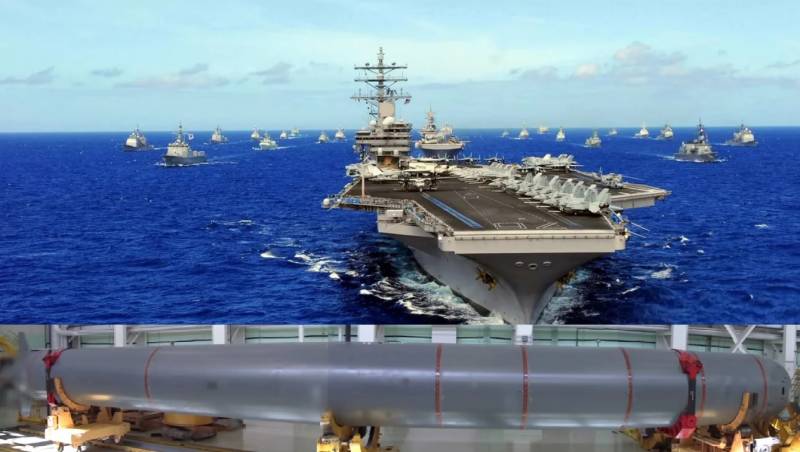


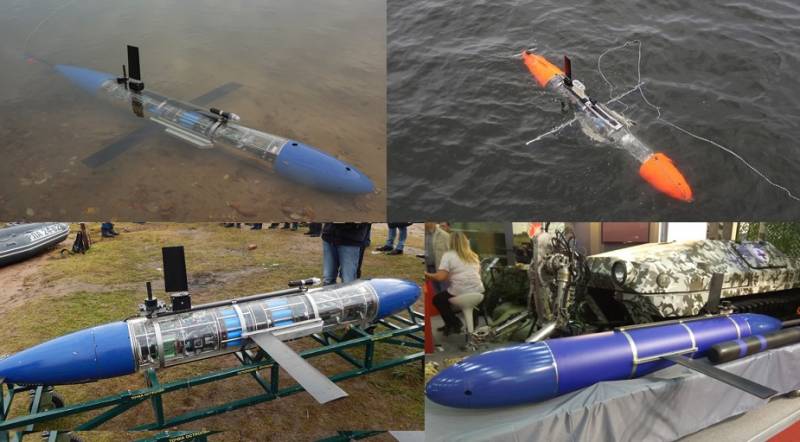
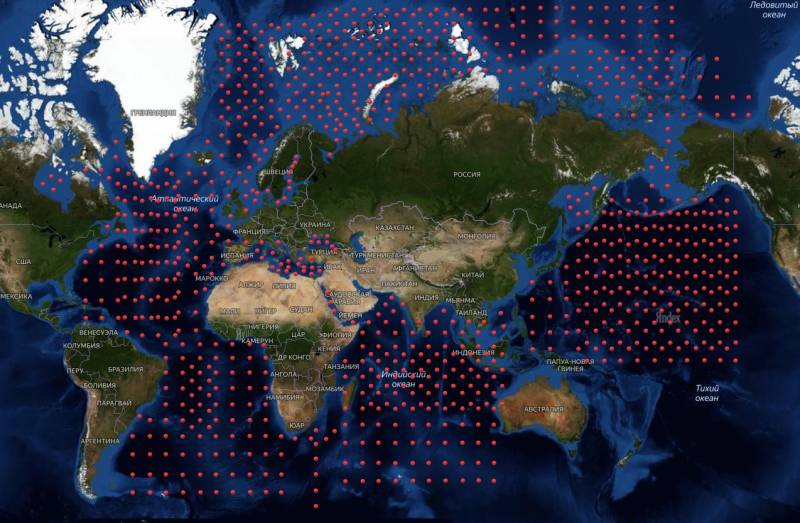
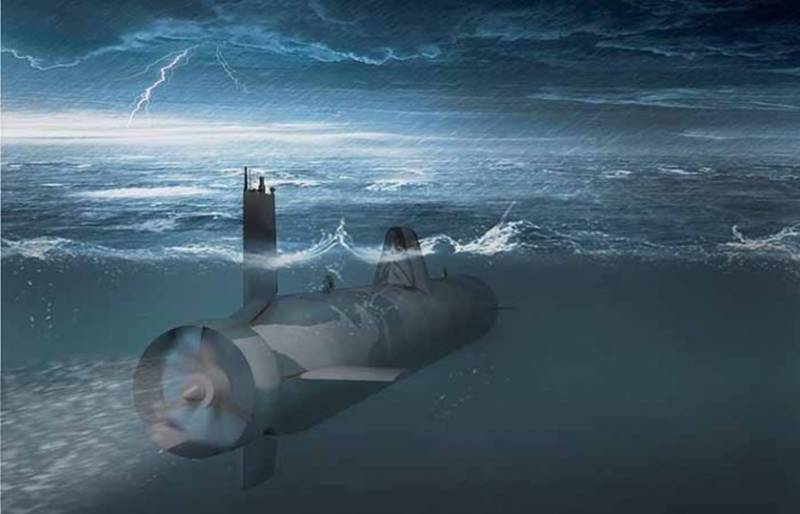
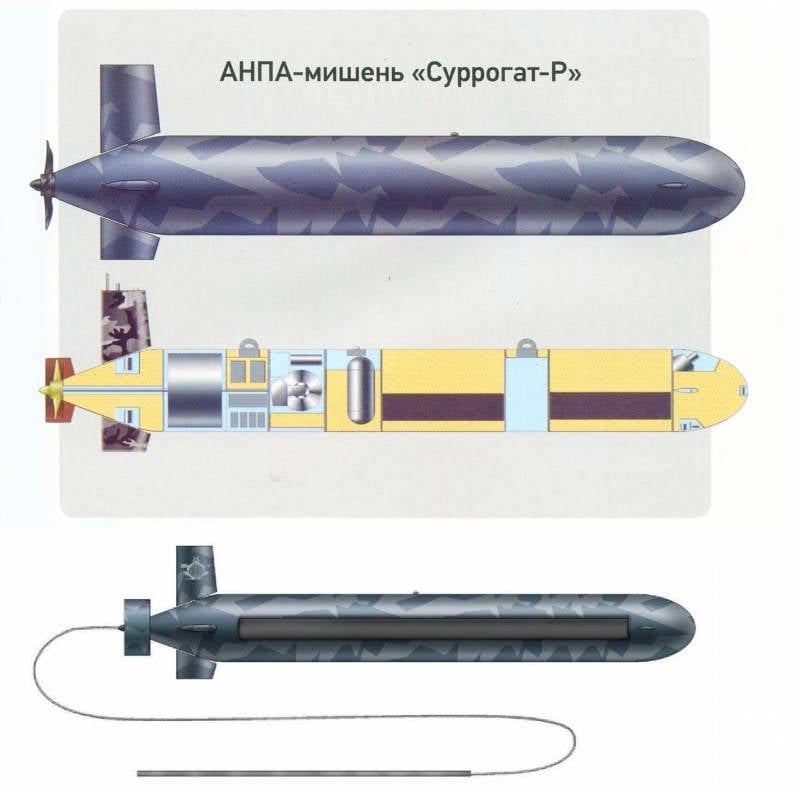

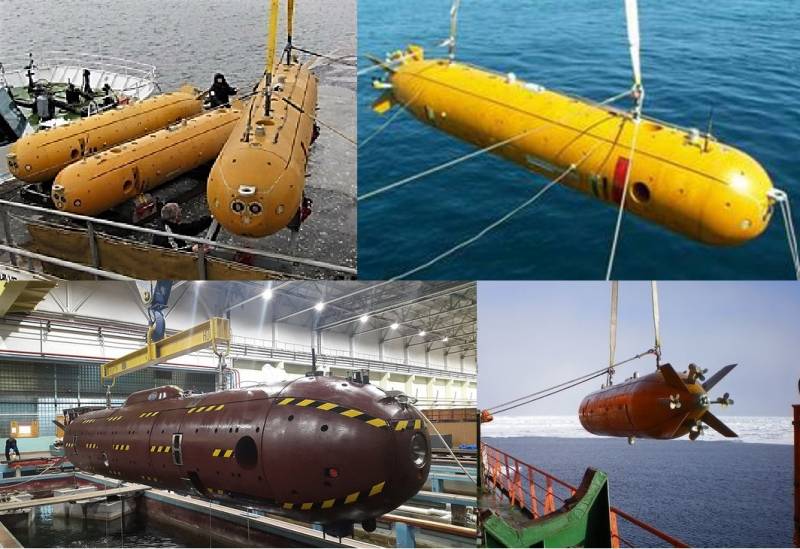


Information